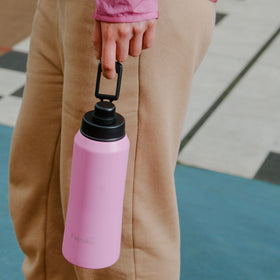
Calendula: How Many Ways Can This Miracle Herb Help You?
Because of its cheerful yellow and orange flowers, calendula is a popular addition to home gardens and lawns. But did you know that this gorgeous herb is also a valuable medicinal plant?
For centuries, people have been using calendula (Calendula officinalis) not only ornamentally, but also for ceremonial, culinary, and medicinal purposes. You can toss calendula petals in your salads and use it to dye fabrics. It can also help regulate your period, reduce fever, treat nappy rash, and may even discourage cancer.
What is calendula?
Calendula is also known as pot marigold. This isn’t the same as the annual marigold plant (genus Tagetes) usually found in vegetable and herb gardens, though they do look very similar. Calendula is native to the Mediterranean, western Europe, and some parts of Asia, but is now grown all over the world.
Calendula contains powerful flavonoids that protect cells from free radical damage. It also has anti inflammatory, antiviral, antimicrobial, and anti tumor properties. Studies have found that calendula helps wounds and exposed ulcers heal faster, possibly by promoting new tissue growth.

What is calendula good for?
Ancient cultures used calendula to cure stomach issues and ease menstrual cramps. Today, it is used mainly to treat and speed up the healing of skin conditions. It also:
- Heals minor burns, wounds, cuts, and sores
- Treats skin irritations, acne, eczema, and insect bites
- Heals nappy rash
- Fights gum inflammation, cavities, and mouth bacteria
- Stops nosebleeds
- Treats conjunctivitis, sore throat, and ear infections
- Reduces fever
- Calms muscle spasms
- Reduces varicose veins and haemorrhoids
- Heals stomach ulcers
- Reduces skin inflammation in breast cancer patients undergoing radiation therapy
How to use calendula
Nowadays, calendula is usually applied to skin instead of taken by mouth. The exceptions are calendula teas and the small amounts of calendula in homeopathic remedies.
Calendula is also available in creams, salves, oils, ointments, and other skincare products. Teas, tinctures, and infusions can be made from dried or fresh calendula flowers.
Safety precautions
Calendula is considered safe to use on skin. However, if you are pregnant or nursing, you should first consult with your healthcare practitioner.
If you are allergic to other members of the daisy family (such as chamomile and ragweed), you might also be sensitive to calendula. If so, use calendula with caution.
Before taking calendula by mouth, consult with your doctor. Calendula may interact with sedatives and with medications for diabetes and high blood pressure.
Product suggestions
Weleda harnesses the skin calming and healing powers of calendula in its Calendula range for delicate baby skin.
The Weleda Calendula Baby Care line includes Cream Bath, Lotion, Nappy Change Cream, Baby Oil, Face Cream, and Shampoo and Body Wash. The entire range is 100% natural, organic and biodynamic and contains organic calendula extract from Weleda's own Biodynamic gardens.
Weleda also has a Calendula Toothpaste perfect for soothing sensitive gums.
Hello Charlie stocks Weleda’s Calendula range and other calendula based products. Shop them here.










